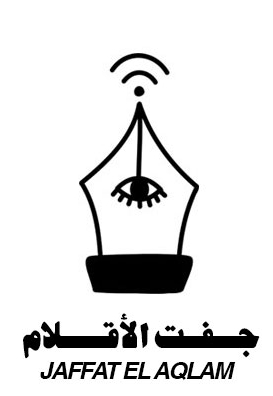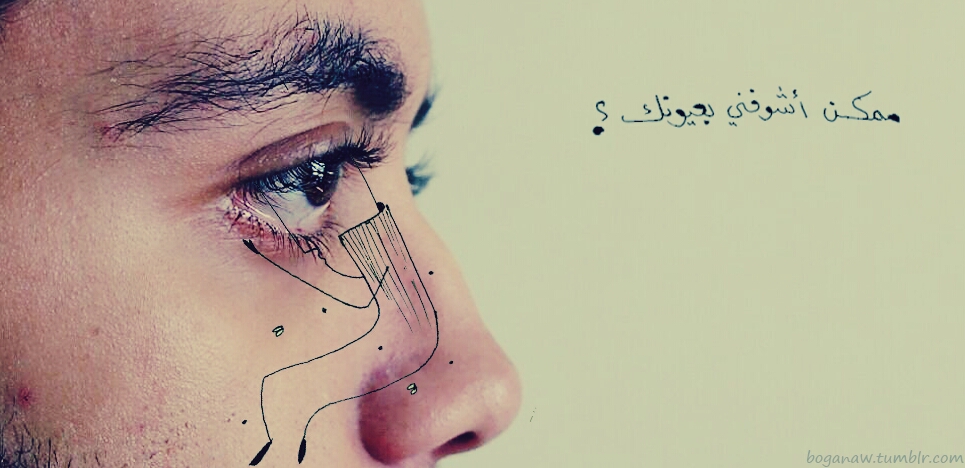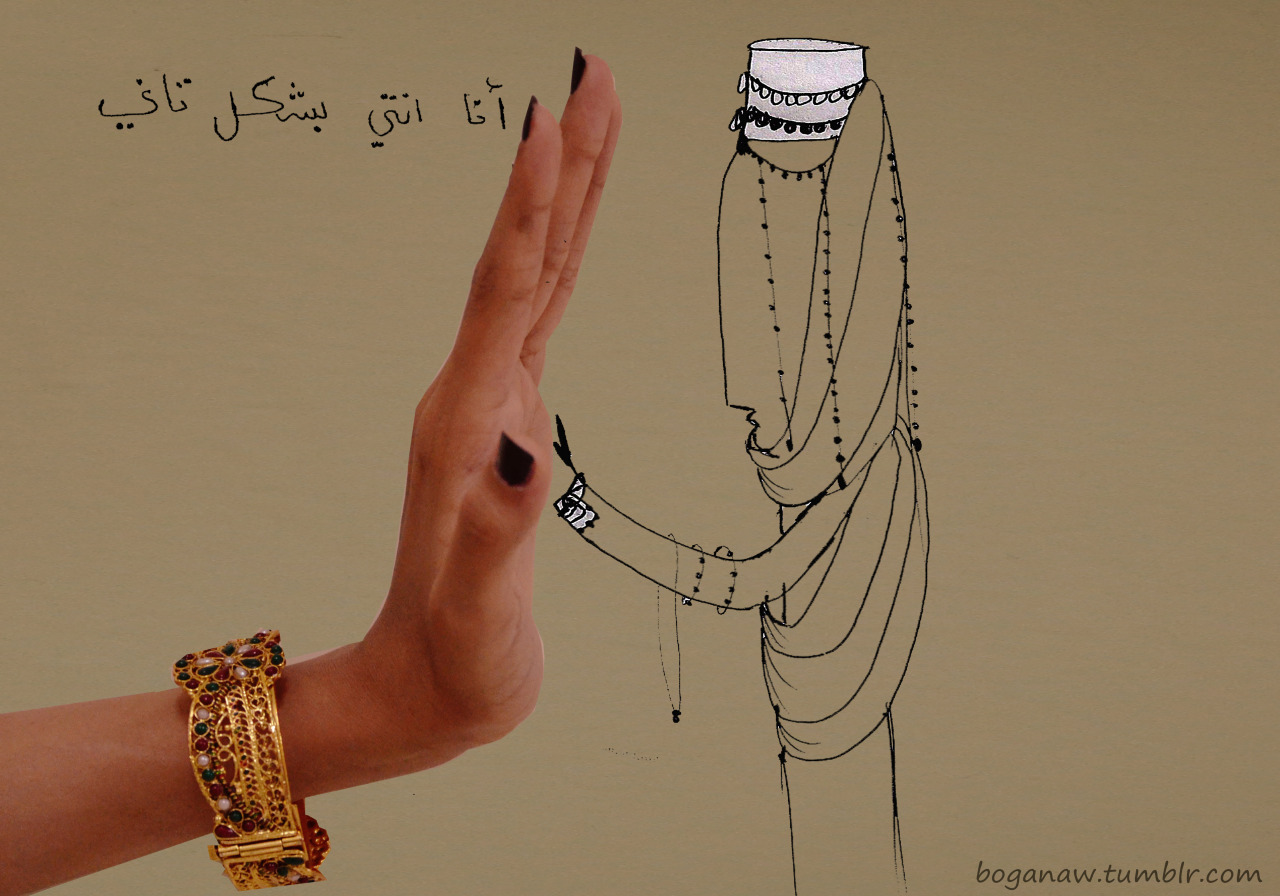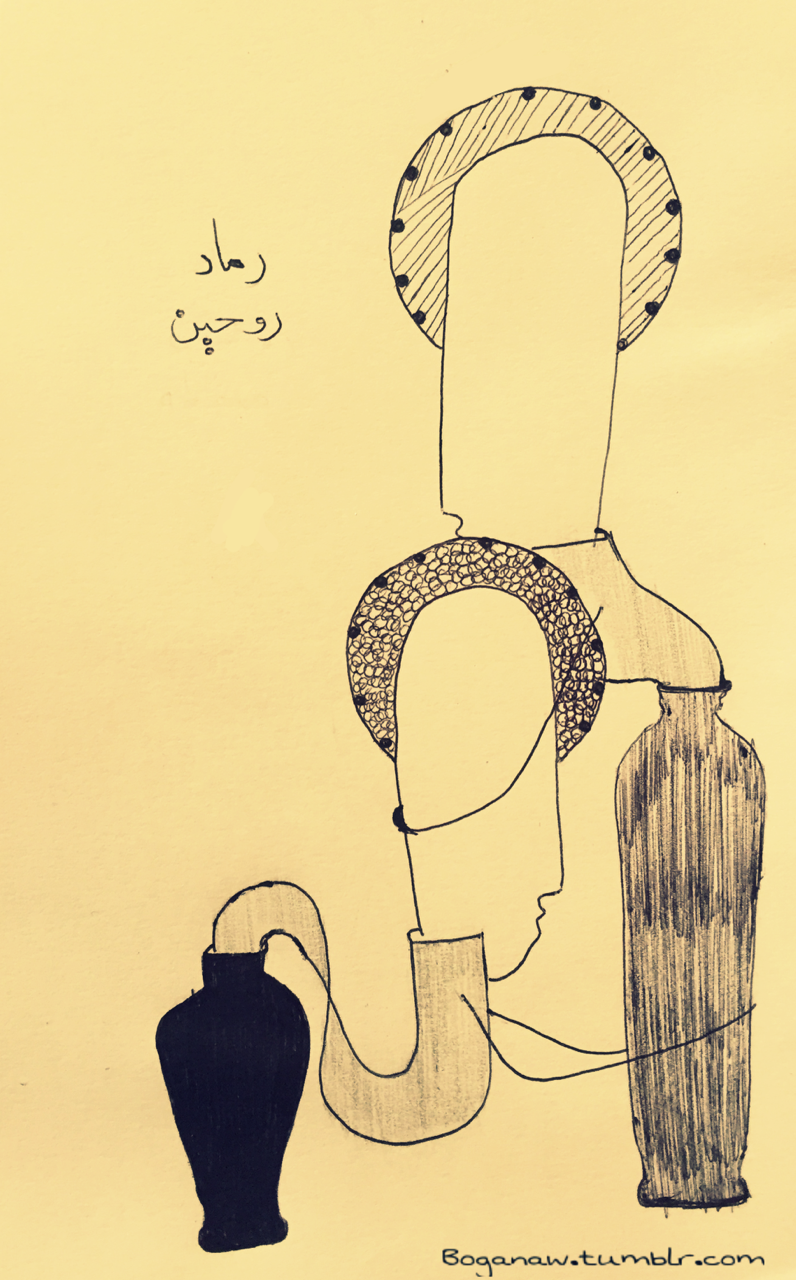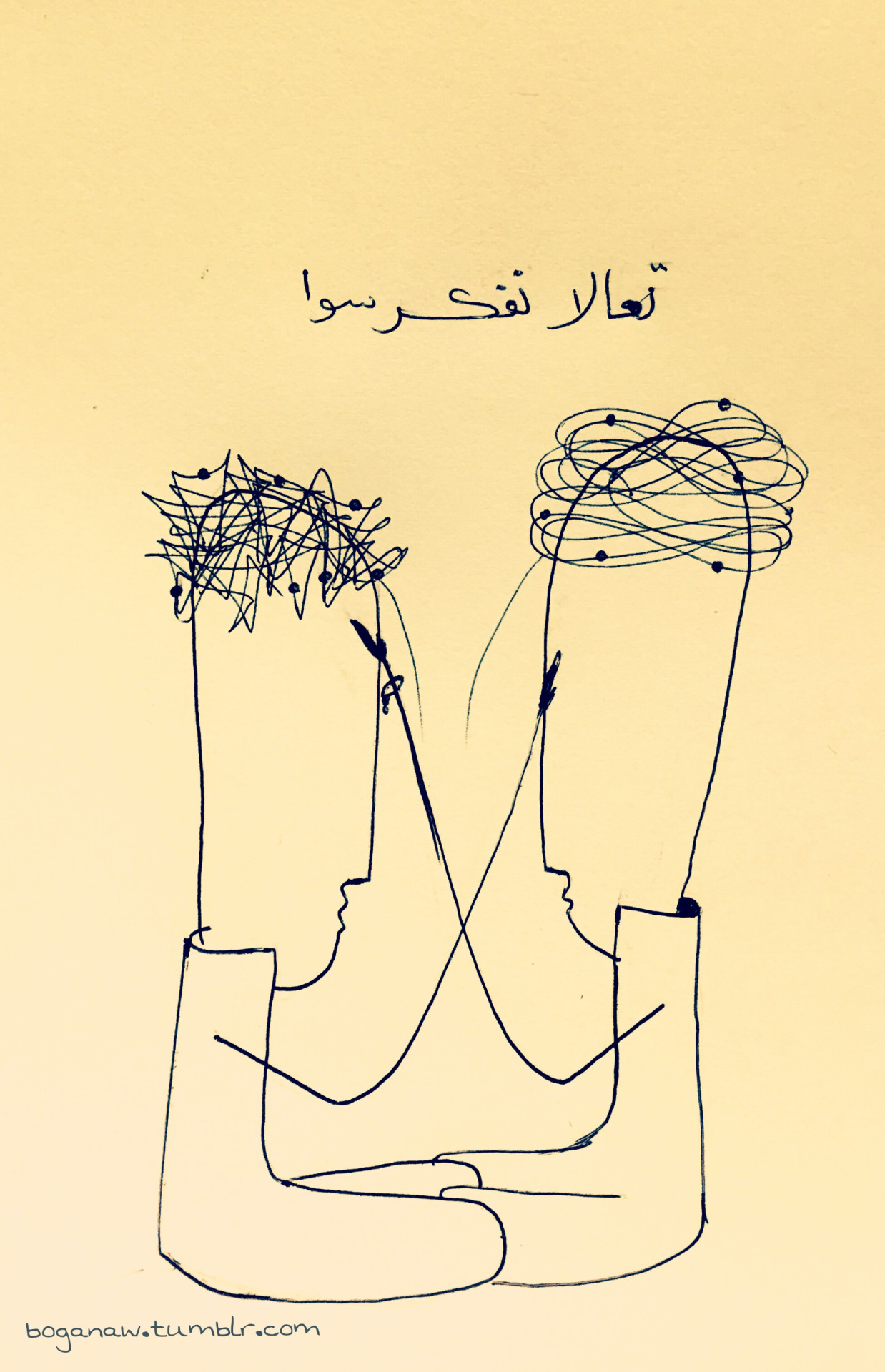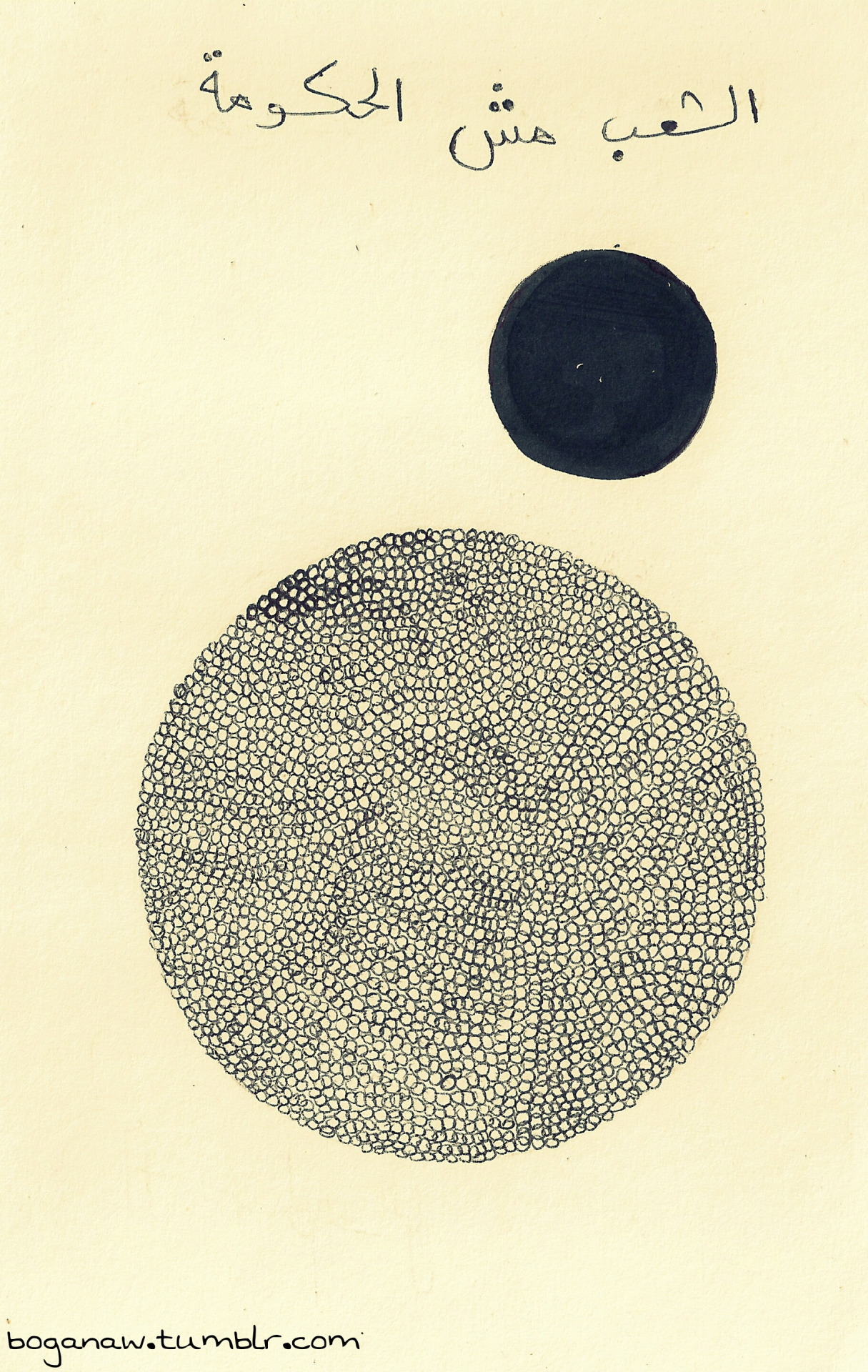In this project of Tawseet Al Sharq, I will bring to light Middle Eastern cultures, traditions, beauty and issues by examining and discussing Middle Eastern art and artists. Since this project started on Tumblr before coming to Jaffat El Aqlam, this piece is therefore dedicated to Wed, the mind behind it all, who I have had the pleasure of following and seeing her art flourish through social media platforms.
When I first came across her work, I was fascinated by how little she uses to effectively show the meaning behind her work. By focusing on replicating a simplistic figure, Wed transforms her minimalistic character from a mere shape into an extension of expressions of thought. Her work places heavy-weighted issues and expressions of Arab youth so tenderly on paper and poignantly celebrates women within that society. After reaching out to her, we sat down and discussed some of her pieces and the following is what happened.
I admire your simplistic character and your approach in producing such works. The use of a pen and paper makes it more accessible to other Arab youth and breaks down the barrier between the audience and your work. So the message flows freely in between the two and is not restrained within the work itself. Can you tell me why you used a simplistic approach to portray such figures and powerful messages?
From the start, I try to keep the character as pure and simple as possible to convey a certain emotion or thought because the goal of my work is to inspire people which is why the character is, in fact, called Mulham, which is Arabic for the word ‘inspirational’. I started off with deciding on the shape, rather than on the approach, and began with a shape of demaghi, which means being or related to the brain. The whole figure symbolizes the brain with the oblong head and minimalistic body. Such a figure disassembles itself from the physical body and does not need one to be enabled or to express itself. To that end, Mulham became an expression of itself and a continuation of my thoughts.
What audience was responding to your work and how have the responses changed overtime?
The majority of the audience that respond to my art are usually Middle Easterners, and women whose opinions resonate with the thought expressed in my work, whether they agree with them or not. When I first started uploading works of Mulham, there wasn’t a lot of response as the subject of my work and ideas accompanying Mulham were still not established with the audience. But with time, they started understanding that Mulham is not just a quick sketch of lines on paper accompanied by thoughts but is much more alive with emotions and thoughts, which gave the character more depth after it was established. Also with such a figure, repetition becomes accessible to both the audience and I to get my message across effectively.
Now, I find it really interesting when two Mulhams are present in the same work where they create this interesting dynamic of how we share and use our ideas on both a societal and an individual level. How do you interpret that in your work, such as Secret Harmony?
Secret Harmony shows an uninhibited attraction, where there is no logical reason to be attracted. The attraction is just a raw emotion of the basic level of connection and more importantly examines a connection that doesn’t have to be explained. The nodes orbiting Mulhams’ heads signify knowledge and by count are unequal showing a difference in the way of thinking yet there is still chemistry. The everlasting connection through the figure combining them into one shows the love, vision and continuity of such a connection. Mulham serves the purpose of capturing such an emotion and cherishing it without the inflection of gender, age or a certain individual due to his simplistic figure. And it is important to me to encapsulate an emotion solely as an expression of itself, to offer the audience a work that expresses a pure connection they have with another person whatever that connection may be.
Next lets go back and talk about the making of the figure itself, how do you change the character to address a certain topic?
I include a specific body part in some of my works, only to highlight an issue specific to that body part. When I do want to specifically show a woman I add a tooq (crown) of flowers or beads to surround Mulham. The only time I distinguish a woman in my work is when the work itself is directed to women and pertaining to an issue concerning women and their rights. Other than that Mulham is genderless.
In Freedom of Opinion, the connection is different than other connections we have seen throughout your work. Instead of being connected organically as they have usually been through their bodies or their minds, they are connected in an out-of-body box signifying their opinions. How is the connection through the box important to this portrait?
This piece is dedicated to all those who have been detained, or faced hardships due to voicing their opinions because they were at the forefront of the revolution. These men and women endure the hardship of raising such opinions, yet it is in their imprisonment that the concepts they’re fighting for, further rose and came forth. So the same box that they are imprisoned in has become a vessel that contains their battle, and their ideas are paving the way for future generations. Their fight has not gone unnoticed and their ideas and achievements can never be imprisoned so this piece is in honor of them.
